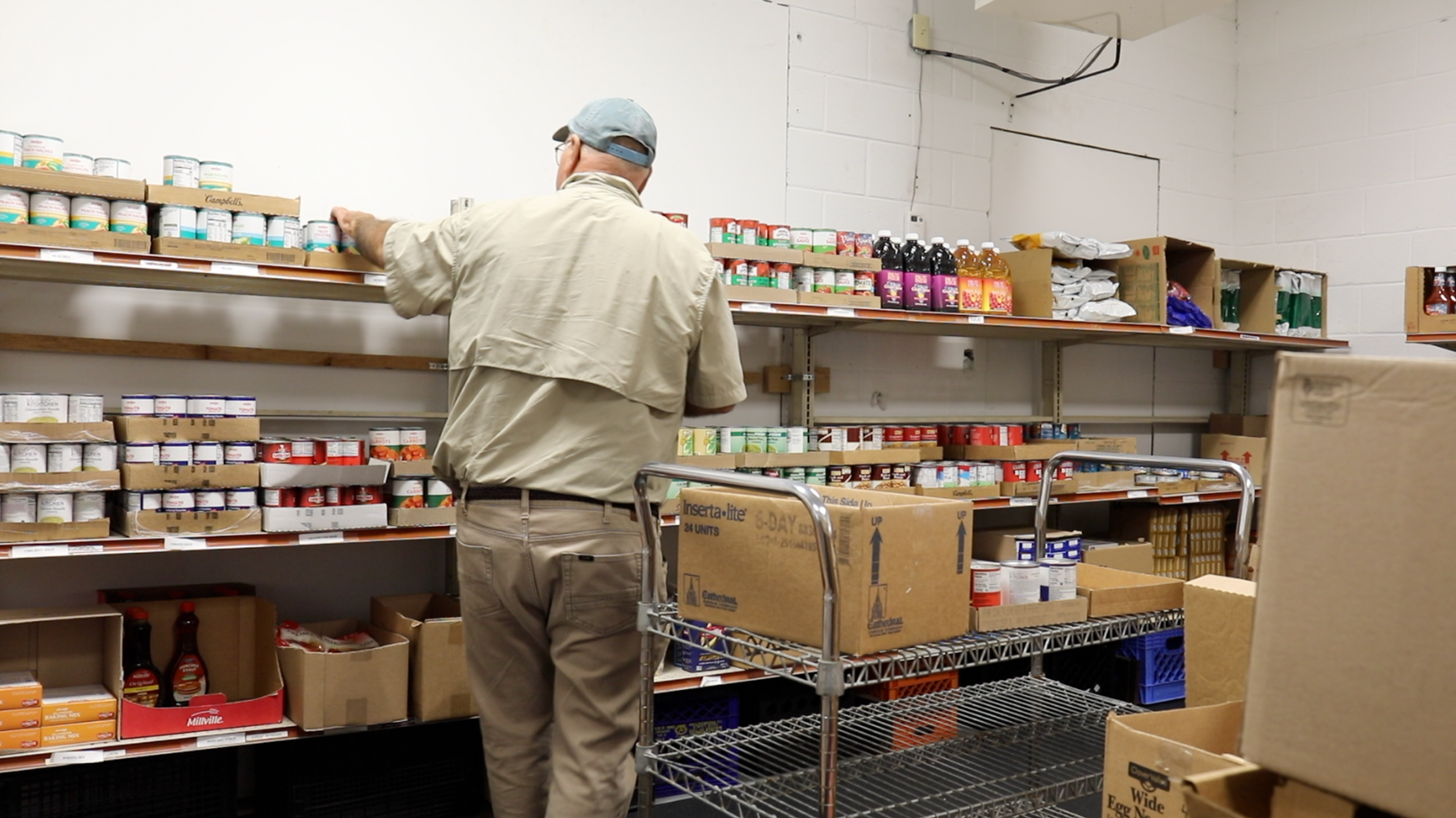Food Insecurity Increasing Due to COVID-19

Shanthi Appelö
| 6 min read
Shanthi Appelö is a registered dietitian and health and wellness spokesperson for Blue Cross Blue Shield of Michigan based in Detroit. Passionate about the science of nutrition and behavior, Shanthi has experience working in clinical nutrition, public health and teaching in the university setting. In her free time, she enjoys experimenting in the kitchen, exploring the outdoors, working on art and spending time with family.

Prior to the COVID-19 pandemic, more than 37 million people in the U.S., including more than 11 million children, were considered food insecure according to Feeding America. Now, the organization projects more than 54 million people, including 18 million children, may experience food insecurity due to the fallout from COVID-19. Michigan is not immune. Feeding America estimates that 19.1% of Michiganders will experience food insecurity during the pandemic compared to 13.6% in pre-COVID 2018. One of the hardest-hit areas in the state is Wayne County in southeast Michigan. Stacy Averill, vice president, Community Giving and Public Relations at Gleaners Community Food Bank, which serves Wayne County, has seen the need grow during the pandemic, but is quick to stress that the problem existed prior to COVID-19 and won’t go away anytime soon. Before the pandemic, the organization was serving about 100,000 households per month – now, it’s closer to 150,000. “We expect the need to continue and the increased need because of COVID to continue,” Averill said.
What is food insecurity?
Being food insecure can vary in effect - individuals may have decreased food quality, variety and desirability. In more severe cases, some may prioritize medical bills or other life necessities over purchasing food, resulting in reduced food intake. Worrying about where you or your family’s next meal is coming from can add stress to an already “full” plate. Learn more about the health effects of food insecurity here.
New challenges
COVID-19 has brought new challenges to the issue of food insecurity. Unemployment, furlough and decreased work hours have financially affected the nation and made more households vulnerable to food insecurity. A statewide poll of 600 Michiganders by the Detroit Regional Chamber found that 28% of respondents were worried about putting food on the table. Food pantries are seeing higher rates of attendance than ever before. In fact, the Food Bank Council of Michigan (FBCM) noted a 40% increase in food distribution during the pandemic. Prior to COVID-19, the organization was delivering 2.6 million pounds of food per week; since the end of March, they’re coordinating delivery of 4.6 million pounds, said Dr. Phil Knight, executive director, FBCM and chair of a newly formed state Food Security Council. Knight said models project increased needs for food assistance will continue through mid-2022.
Who is affected?
All walks of life have been affected by food insecurity during the pandemic, though workers in service and hospitality industries have experienced especially high rates of layoffs with businesses having to cut hours and close. Groups who were already vulnerable to food insecurity now face amplified access issues. For example, low-income households may visit several grocers to find the most affordable food, making traveling necessary oftentimes via public transportation. In order to meet social distancing guidelines, public transportation is more limited and riskier during the pandemic. Moreover, meals at senior centers and soup kitchens are limited. Food insecurity meets COVID-19 full circle as groups who face this issue have higher rates of diet-related illnesses such as Type 2 diabetes and heart disease, conditions associated with a higher risk for severe illness associated with COVID-19.
Getting help
There are more than 3,000 local food pantries serving Michigan’s 83 counties. As hours may have changed, call ahead and check out your local pantry’s social media to learn about changes, eligibility requirements and possible mobile pantries. If your income has changed, you may be eligible for help through the Supplemental Nutrition Assistance Program (SNAP) or Special Supplemental Nutrition Program for Women, Infants and Children (WIC). More resources:
- Findafoodpantry.org allows you to search for nearby pantries based on your ZIP code.
- USDA Hunger hotline has information on meal sites, food banks, and other services. Call 1-866-3-HUNGRY or 1-877-8-HAMBRE for Spanish.
- mealsonwheelsamerica.org/find-meals For individuals with diminished mobility who are generally aged 60 and older. fbcmich.org/resources/find-a-food-bank/
See the seven major food banks and associated pantries.
Find free food assistance programs quickly for children and their families.
What to shop for
As much as you are able to, maintain a balanced diet by purchasing items from all food groups. Planning out your meals prior to going to the store can help you buy just the right amount and prevent food waste/spoilage.
- Protein: Beans and peas, such as kidney beans, split peas, and lentils are good sources of protein for mains, side dishes and soups. Beans and peas carry lower price tags than a similar amount of other protein foods. Pairing beans with rice makes the protein complete for the nutrients you need. Eggs are a great low-cost option for omelets, casseroles, egg bites and much more. Canned tuna and salmon are shelf stable and combined with mayonnaise, vegetables and herbs make delicious additions to salads and sandwiches. Lower lean meat costs by opting for family size and freezing what you don’t use.
- Grains: Choose whole grains. Oatmeal in a big pack saves several dollars monthly. Brown rice and whole wheat pasta are great inexpensive options.
- Dairy: Opt for low-fat dairy options. Choose the latest expiration dates by scoping out the shelves to get the most use of your dairy. For yogurt, buy a large container rather than individual packs.
- Fruits and vegetables: Buy only what you can use before it spoils and buy in-season. Apples, bananas, cabbage and carrots are inexpensive and nutritious options. Choose fruit canned in 100% fruit juice and vegetables that are low-sodium or have no salt added. Check unit prices to see which size and brand has the best deal.
Ways to help
Avoid food hoarding which can leave families who cannot afford to buy in bulk at a disadvantage when they are met by empty shelves at grocery stores. If you see a grocery item labeled “WIC” running low, opt for a different item to allow a WIC recipient to receive their necessity. Next, explore your community’s needs by calling your local food bank or pantry. Ways to help include donating your time, food and funds that helps support purchasing food, equipment to meet an increased demand, fuel for mobile pantries and more. Listen to this episode of the A Healthier Michigan Podcast to learn more about food insecurity and how the pandemic has worsened the problem.
Editor's Note: This is one story in part of a year-long blog series. Blue Cross Blue Shield of Michigan journalists will be diving into some of the environmental and socio-economic reasons behind disparate health outcomes for certain groups of people. While there is no one answer or simple solution to resolving these complex issues, we’ll talk to community organizations working to address social determinants of health in neighborhoods and communities across Michigan, as well as highlight work that Blue Cross is doing to contribute to solutions for the health of all Michiganders. Related:
- Understanding Food Insecurity
- Understanding Social Determinants of Health in Michigan
- COVID-19: What You Need to Know
Photo credit: SDI Productions





